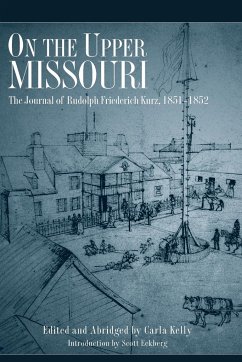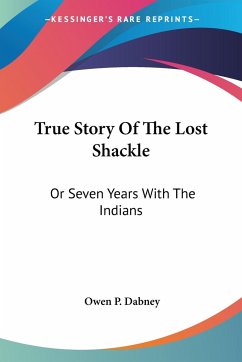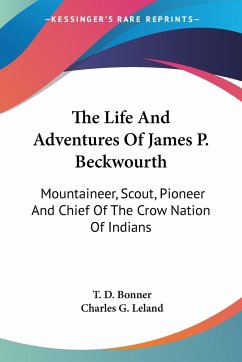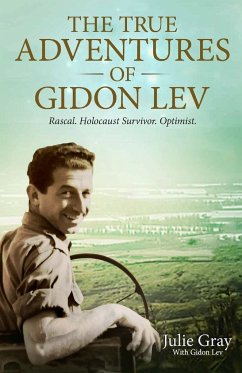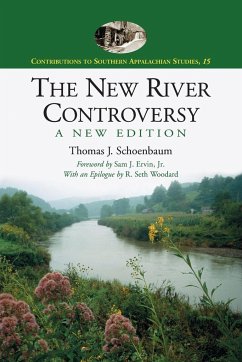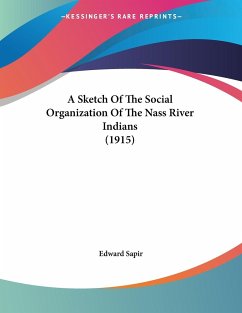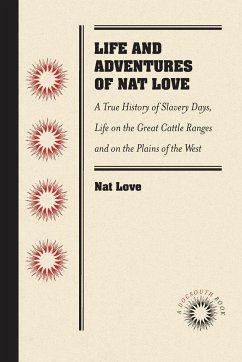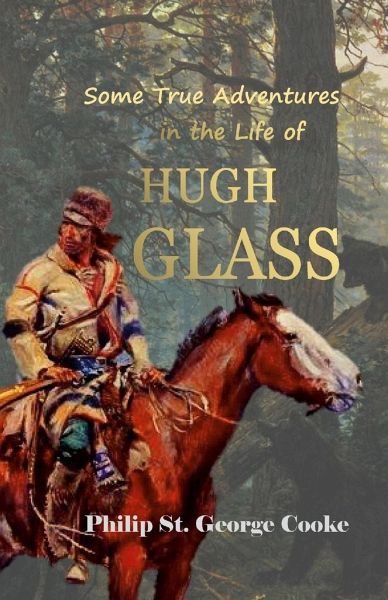
Some True Adventures in the Life of Hugh Glass, a Hunter and Trapper on the Missouri River
Versandkostenfrei!
Versandfertig in 1-2 Wochen
10,99 €
inkl. MwSt.

PAYBACK Punkte
5 °P sammeln!
"Cooke's account is...that Glass was caught too suddenly to retreat and staked his all upon a single shot...the bear rushed upon Glass with such speed that escape was impossible." - The American Fur Trade of the Far West (1902) "Cooke...follows Glass minutely through all the adventurous way up the Missouri River...toward the supposed rendezvous of Henry's trappers." -James Bridger, Trapper, Frontiersman, Scout and Guide (1925) "Cooke started his prairie life in 1829 as lieutenant in the expedition to the boundary to escort Santa Fe traders. In 1831 he made a trip overland to the Platte and to ...
"Cooke's account is...that Glass was caught too suddenly to retreat and staked his all upon a single shot...the bear rushed upon Glass with such speed that escape was impossible." - The American Fur Trade of the Far West (1902) "Cooke...follows Glass minutely through all the adventurous way up the Missouri River...toward the supposed rendezvous of Henry's trappers." -James Bridger, Trapper, Frontiersman, Scout and Guide (1925) "Cooke started his prairie life in 1829 as lieutenant in the expedition to the boundary to escort Santa Fe traders. In 1831 he made a trip overland to the Platte and to the Missouri." -The Plains and the Rockies (1920) Mauled by a grizzly bear at the headwaters of the Missouri River and left for dead by fellow mountain men Fitzgerald and the youthful Jim Bridger, how did Hugh Glass manage to revive and crawl 200 miles to Fort Kiowa, South Dakota? In 1857, Philip St. George Cooke (1809 -1895) would publish a short 10-page account of adventures of Hugh Glass inside his 1857 book titled, "Scenes and Adventures in the Army." It is this 10-page account that has been republished here for the convenience of the interested reader, "Some True Adventures in the Life of Hugh Glass, a Hunter and Trapper on the Missouri River." Hugh Glass (c. 1780-1833) was an American fur trapper and frontiersman noted for his exploits in the American West during the first third of the 19th century. Glass was born in Pennsylvania, to Irish parents. He was an explorer of the watershed of the Upper Missouri River in present day North Dakota, South Dakota and Montana. Glass was famed, most of all, as a frontier folk hero for his legendary cross-country trek after being mauled by a grizzly bear. Glass' most famous adventure began in 1822, when he responded to an advertisement in the Missouri Gazette and Public Adviser, placed by General William Ashley, which called for a corps of 100 men to "ascend the river Missouri" as part of a fur trading venture. These men would later be known as Ashley's Hundred. In modern pop culture, Hugh Glass is best known as the hero of the 2015 movie, The Revenant. The screenplay by Mark L. Smith and Iñárritu is based in part on Michael Punke's 2002 novel of the same name, which describes frontiersman Hugh Glass's experiences in 1823; that novel is, in turn, based on the 1915 poem The Song of Hugh Glass. The film stars Leonardo DiCaprio & Tom Hardy.



